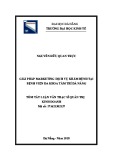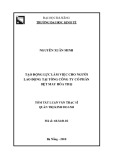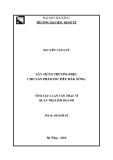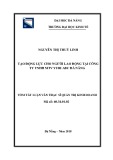
Hindawi Publishing Corporation
EURASIP Journal on Advances in Signal Processing
Volume 2007, Article ID 56561, 15 pages
doi:10.1155/2007/56561
Research Article
Audio Key Finding: Considerations in System Design
and Case Studies on Chopin’s 24 Preludes
Ching-Hua Chuan1and Elaine Chew2
1Integrated Media Systems Center, Department of Computer Science, USC Viterbi School of Engineering,
University of Southern California, Los Angeles, CA 90089-0781, USA
2Integrated Media Systems Center, Epstein Department of Industrial and Systems Engineering,
USC Viterbi School of Engineering, University of Southern California, Los Angeles, CA 90089-0193, USA
Received 8 December 2005; Revised 31 May 2006; Accepted 22 June 2006
Recommended by George Tzanetakis
We systematically analyze audio key finding to determine factors important to system design, and the selection and evaluation of
solutions. First, we present a basic system, fuzzy analysis spiral array center of effect generator algorithm, with three key deter-
mination policies: nearest-neighbor (NN), relative distance (RD), and average distance (AD). AD achieved a 79% accuracy rate
in an evaluation on 410 classical pieces, more than 8% higher RD and NN. We show why audio key finding sometimes outper-
forms symbolic key finding. We next propose three extensions to the basic key finding system—the modified spiral array (mSA),
fundamental frequency identification (F0), and post-weight balancing (PWB)—to improve performance, with evaluations using
Chopin’s Preludes (Romantic repertoire was the most challenging). F0 provided the greatest improvement in the first 8 seconds,
while mSA gave the best performance after 8 seconds. Case studies examine when all systems were correct, or all incorrect.
Copyright © 2007 C.-H. Chuan and E. Chew. This is an open access article distributed under the Creative Commons Attribution
License, which permits unrestricted use, distribution, and reproduction in any medium, provided the original work is properly
cited.
1. INTRODUCTION
Our goal in this paper is to present a systematic analysis of
audio key finding in order to determine the factors important
to system design, and to explore the strategies for selecting
and evaluating solutions. In this paper we present a basic au-
dio key-finding system, the fuzzy analysis technique with the
spiral array center of effect generator (CEG) algorithm [1,2],
also known as FACEG, first proposed in [3]. We propose
three different policies, the nearest-neighbor (NN), the rel-
ative distance (RD), and the average distance (AD) policies,
for key determination. Based on the evaluation of the ba-
sic system (FACEG), we provide three extensions at different
stages of the system, the modified spiral array (mSA) model,
fundamental frequency identification (F0), and post-weight
balancing (PWB). Each extension is designed to improve the
system from different aspects. Specifically, the modified spi-
ral array model is built with the frequency features of audio,
the fundamental frequency identification scheme emphasizes
the bass line of the piece, and the post-weight balancing uses
the knowledge of music theory to adjust the pitch-class dis-
tribution. In particular, we consider several alternatives for
determining pitch classes, for representing pitches and keys,
and for extracting key information. The alternative systems
are evaluated not only statistically, using average results on
large datasets, but also through case studies of score-based
analyses.
The problem of key finding, that of determining the most
stable pitch in a sequence of pitches, has been studied for
more than two decades [2,4–6]. In contrast, audio key find-
ing, determining the key from audio information, has gained
interest only in recent years. Audio key finding is far from
simply the application of key-finding techniques to audio in-
formation with some signal processing. When the problem
of key finding was first posed in the literature, key finding
was performed on fully disclosed pitch data. Audio key find-
ing presents several challenges that differ from the original
problem: in audio key finding, the system does not determine
key based on deterministic pitch information, but some au-
dio features such as the frequency distribution; furthermore,
full transcription of audio data to score may not necessarily
result in better key-finding performance.
We aim to present a more nuanced analysis of an audio
key-finding system. Previous approaches to evaluation have






























